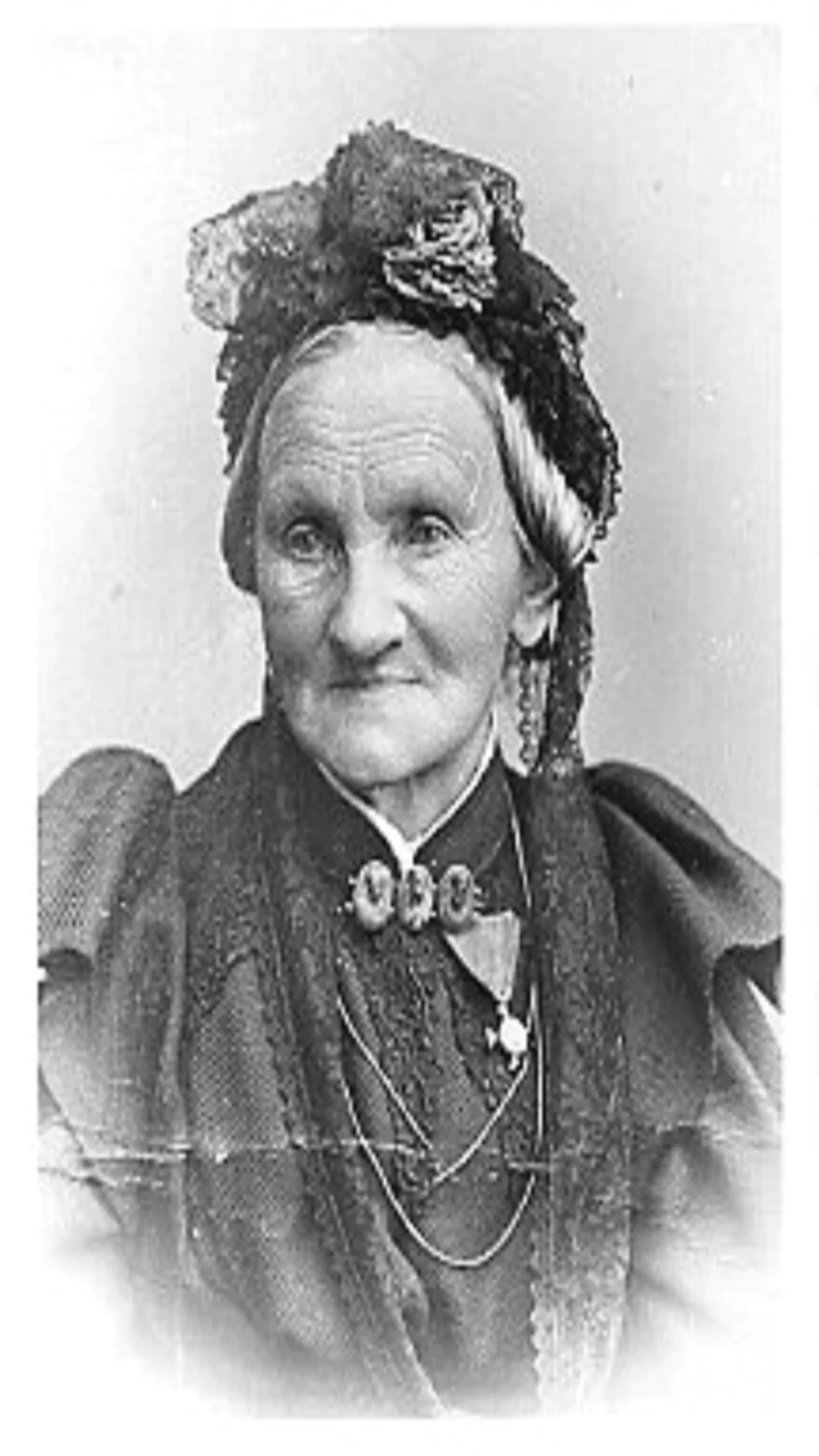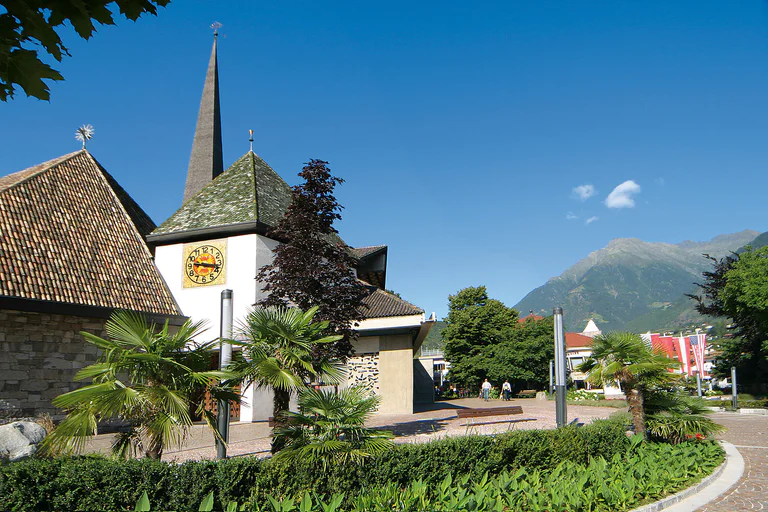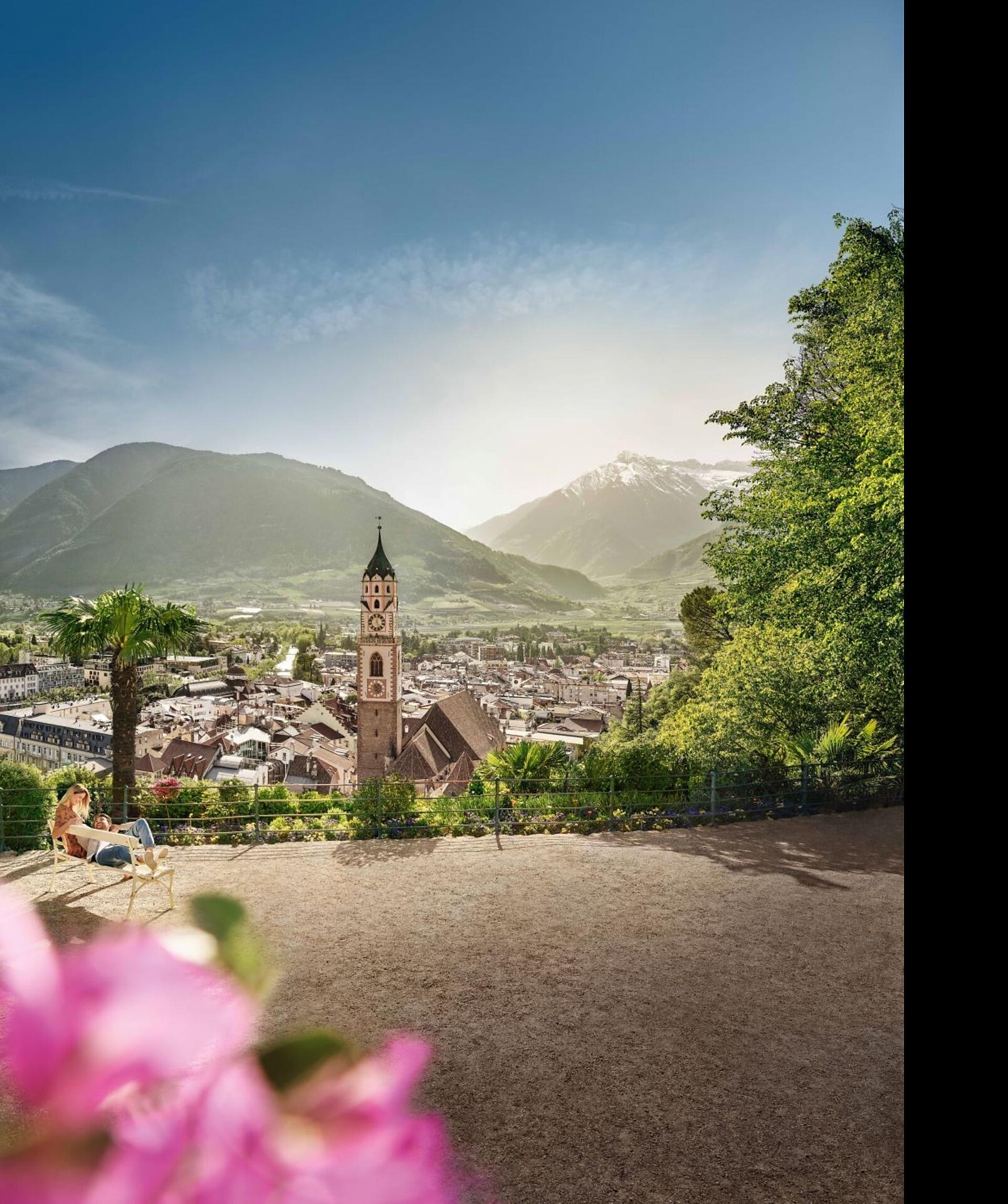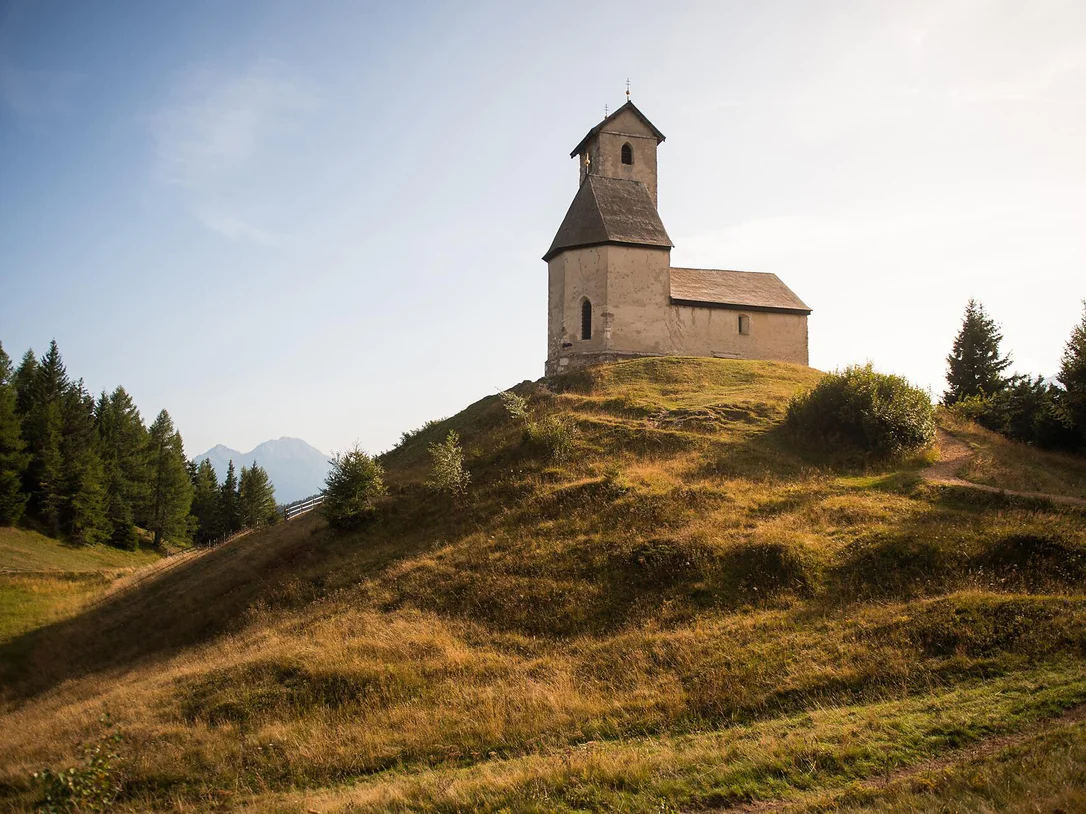Es gibt keinen Ort in Südtirol, in dem keine Kirche steht: Christlich geprägt, gibt es hierzulande eine große Dichte an Kirchen und Kapellen, Klöstern und Abteien, die ältesten davon bereits aus der frühchristlichen Zeit. Entlang viel frequentierter Wege, die bereits im frühen Mittelalter als Verbindung zwischen Nord und Süd dienten, entstanden Kapellen als Schutz für Reisende, Hospize und Kommenden für Ritterorden. Dazu kamen Klöster auf dem Land und in Städten, größere Kirchen und Kathedralen. Heute sind weit über 250 Kirchen erhalten und zugänglich. Besuchen Sie diese in kultureller, künstlerischer und kunsthistorischer Hinsicht interessanten Bauwerke, die Zeugen einer wechselvollen Geschichte sind.
Tils with a late gothic church has been recently elevated to a parish. It is consecrated to St. Vitus, the old saint of the farmers, whose painful martyrdom is represented in the nave.


























































